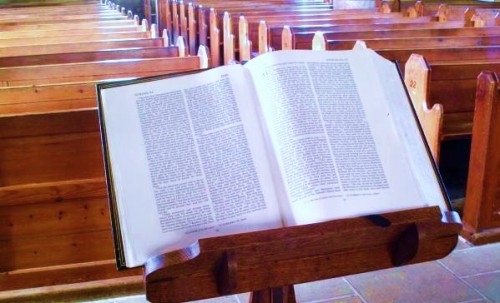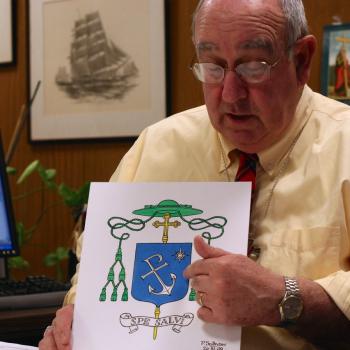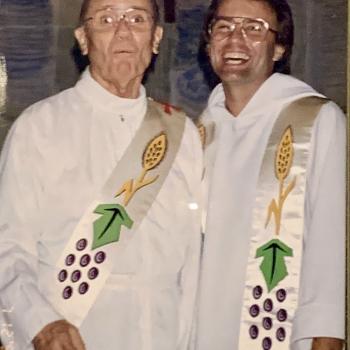Several months ago, the folks at Deacon Digest asked me if I might have anything interesting to contribute to a special issue devoted to preaching.
Well, I didn’t.
But they printed it anyway.
Now you can find that essay — “Pray, Prepare, Practice: How I Put Together My Homilies” — here at Patheos. A snip:
I can still remember trying out my first homily for an audience of one: my wife. My wife is an actress, and a great lector. I knew she’d be a tough audience. I stood in our living room, four pages of text in my hand, cleared my throat, and delivered what I thought was a very good little sermon about Jesus calming the storm in the Sea of Galilee. My wife listened politely. And when it was finished she looked at me. A long moment passed. Then she spoke.
“That was . . . okay.”
I guess she saw my lip quivering.
“Let me look at this,” she said, as she took the pages from my trembling hand. She read over the text. “Well, this part is good,” she said. “And this one. And I like that. But it’s not punching through. You’re losing me.” She looked at me. “Honey, try to take more time with it. Want to try it again?” I did. And somehow, after a couple more tries, I got it to work. It was a valuable lesson for me: delivering a good homily isn’t about reading. It’s about preaching.
An old joke asks, “How do you get to Carnegie Hall? Practice.” The same could be said about how to get a homily from the page to the pulpit and into the hearts and minds of the people.
I’ve worked out a system where I practice my homilies three times before I deliver them. The first time is a simple “cold” read to hear how the words come out of my mouth and to see if I’ve said something stupid. I’ll often shorten sentences or change words or adjust the pacing. You never quite know how something will hit the ear until you say it out loud.
After that, I’ll try out the homily two more times, working out inflections and phrasing and pacing—what parts to speed up, which ones to slow down. By the time I’ve completed my third run-through, I have a good sense of the overall text—the geography of it—and when I climb into the pulpit to deliver it, I find I only occasionally have to glance at the page. The printed text becomes a roadmap, guiding me from point to point, phrase to phrase.
The result: I find that I don’t read the homily. I preach it.
Curious? Check out the rest here.
If I had one more thing to add, it would be a little advice for those in formation. In two words: record it. I’d never heard myself preaching until I started taping my homilies recently (the results are here and here). It’s proven to be a valuable learning experience and, I hope, will serve to make me a better preacher.
UPDATE: A complaint I hear often is that of too many priests or deacons just “winging it” — and delivering homilies that, to the contrary, never take flight. Many, in fact, crash. Recently, a seminarian told me about a priest who always taught that if you can’t prepare, for one reason or another, just don’t preach. And he practiced what he preached. Once, at daily Mass, he proclaimed the gospel and then concluded by saying, “I had a lot to do last night and didn’t have time to prepare a homily. So let’s just take a few moments to silently reflect on the gospel.” And he sat down and that was that. That priest is now my hero.












